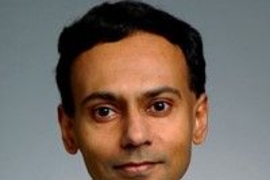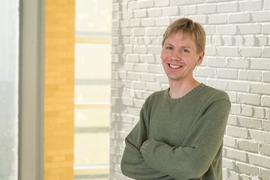In February, the Institute established five working groups to generate ideas for different components of the structure and operation of the new MIT Stephen A. Schwarzman College of Computing. Three community forums for all five working groups were held Wednesday, April 17, and Thursday, April 18. Troy Van Voorhis, the Haslam and Dewey Professor of Chemistry, and Srini Devadas, the Webster Professor of Electrical Engineering and Computer Science, are co-chairs of the Working Group on Curricula and Degrees, which is charged with studying how to develop new curricula for the college, what degrees should be shifted from their existing departments into the college, what new degrees or other credentials might be created, and how to design dual-degree programs with existing departments. MIT News checked in with Van Voorhis and Devadas to find out about the group’s goals, processes, and progress so far.
Q: What process has your working group undergone in preparing your report, and how many people have been involved?
A: We have about 15 members in the committee not including the co-chairs. All schools are represented, as are staff and students. We meet each week for an hour and there are email discussions between meetings. We started with naming ourselves CoC2 (College of Computing Committee on Curricula) and drafting an educational mission for the college. We have been refining our mission statement throughout our discussions.
We have had extensive discussions on how the college can provide a broad funnel for undergraduate and graduate students interested in computing by offering various types of credentials, including minors, joint degree programs, and certificates. During these meetings, we have discussed the pros and cons of current credentials, and members have proposed new variants that might better serve the needs of students.
At the graduate level, we discussed the Business Analytics Certificate in Sloan as an example of a structure that we might want to replicate in the college, but with a focus on computation. We have begun writing our report that is due at the end of the semester.
Q: Could you describe any areas that participants in the process have readily agreed on, or others that have turned out to be contentious?
A: We have focused primarily on pedagogical aspects thus far, and not on operational aspects, for example: faculty receiving credit for teaching courses jointly across the college and other schools; whether the college is responsible for all joint majors, as opposed to departments, etc. This is largely because these questions are clearly dependent on the eventual structure of the college and the responsibilities of faculty who are primary in the college and those that are affiliated. Given our timeline, it makes sense to visit these questions in a holistic manner after all the committees have written their reports.
Our discussions have been always informative and often passionate, but not contentious in the least. As an example, we were able to draft an educational mission that everyone largely agreed with in short order, and the ongoing refinement has been about getting nuances “right.” Our meeting with the Societal Impact committee was productive and impacted our mission statement, and will impact our report.
Q: What do you see as the next steps once you finish your working group's report?
A: Provost [Martin] Schmidt, Dean [Dan] Huttenlocher, and the administration will determine next steps. First, the organizational structure of the college needs to be determined — in other words, what departments are in the college, and more important from our committee’s standpoint, what degree programs will be the college’s responsibility. A very important set of decisions relates to faculty appointments in the college and how credit for teaching classes in the college is assigned by departments within and outside the college.
There is some work that can proceed in parallel — for example, a new committee could engage the Committee on Curricula to discuss potential flexibility in the current restriction of “at most two courses in a minor can be used to satisfy a major requirement.” The exploration of degree programs that offer a truly integrated experience across computation and another discipline is another possibility.












